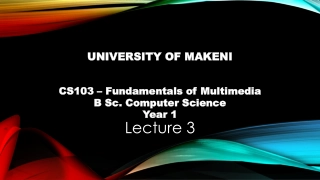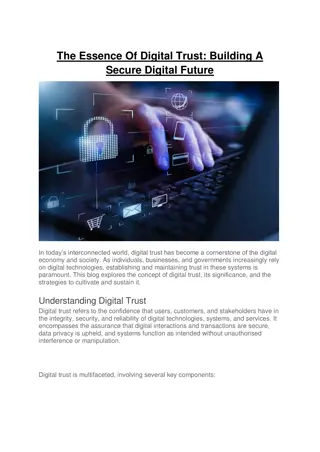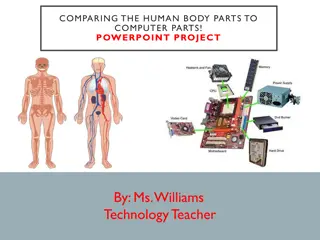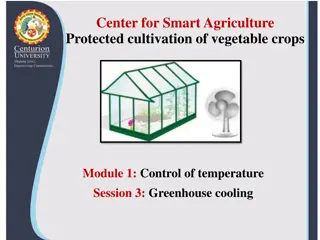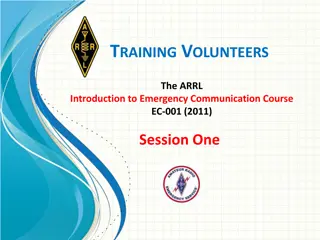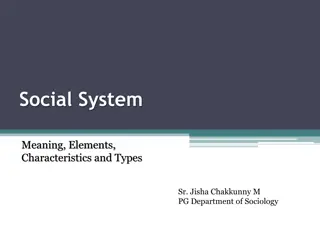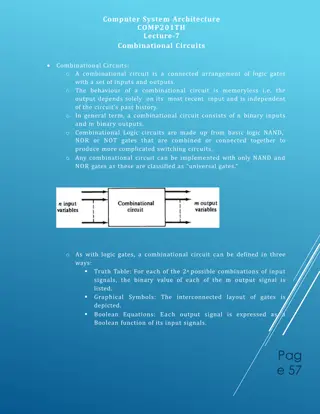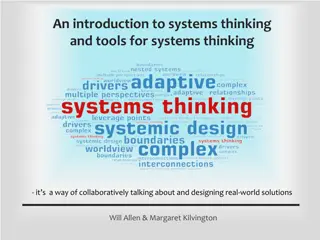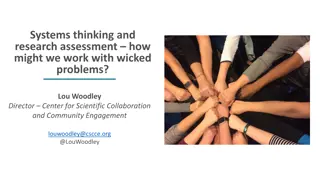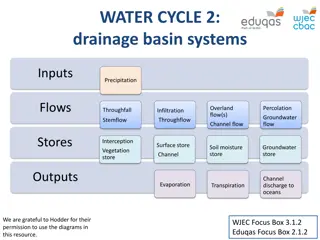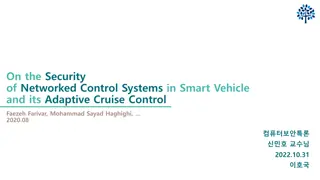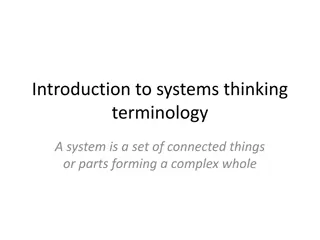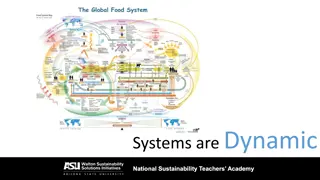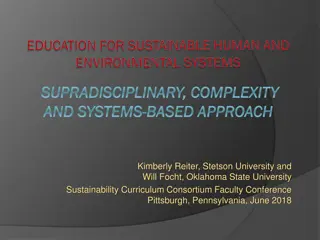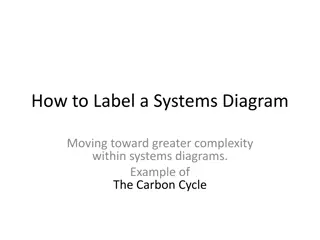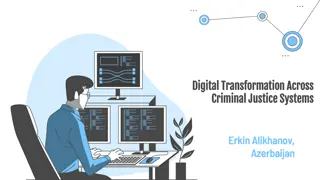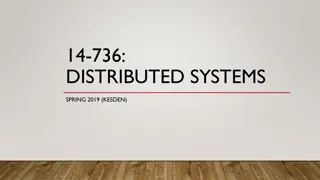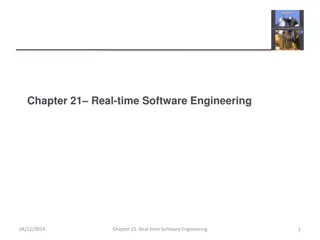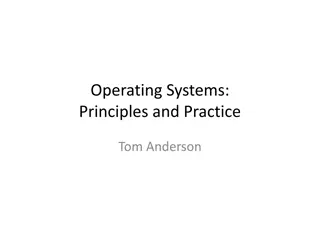Phantom Asset Recovery - cryptorecoverysystem.com
In today\u2019s fast-paced and interconnected world, the concept of financial security has taken on new dimensions. One of the emerging challenges in this landscape is the presence of phantom assets \u2014 elusive and intangible financial entities that pose a threat to the stability of our financial
4 views • 7 slides
Child and Adolescent Health in Humanitarian Settings: Operational Guide
This operational guide focuses on four interconnected programmatic action areas - Assess & Prioritise, Coordinate, Respond, and Monitor, Evaluate & Review. It provides guidance on obtaining data, coordinating approaches, planning and enacting activities, and using data systems to improve child and a
2 views • 48 slides
Understanding Multimedia Systems: Hardware and Software Components
Multimedia systems require specific hardware and software components to meet the demands of producing and playing multimedia content. Development systems are used for creating content with higher specifications, while playback systems are used for playing multimedia files with lower specifications.
8 views • 46 slides
Embedded Systems Design Process in the Embedded systems
Embedded systems are all around us, from the tiny microcontrollers in our household appliances to the sophisticated control systems in cars and aeroplanes. But how are these systems designed? Let's delve into the basics of the embedded systems design process in simple terms that anyone can understan
2 views • 9 slides
Overview of Distributed Systems: Characteristics, Classification, Computation, Communication, and Fault Models
Characterizing Distributed Systems: Multiple autonomous computers with CPUs, memory, storage, and I/O paths, interconnected geographically, shared state, global invariants. Classifying Distributed Systems: Based on synchrony, communication medium, fault models like crash and Byzantine failures. Comp
9 views • 126 slides
Operating Systems
An operating system is a crucial program that manages all other programs on a computer. It handles tasks like input recognition, file management, and device control. There are different types of operating systems such as single-user, single-task systems, multi-user, multi-task systems, real-time ope
6 views • 11 slides
Understanding Information Systems in Organizational Management
Management in organizations is divided into three levels: operational, tactical, and strategic. Each level requires different information systems to support various activities. Operational systems focus on routine transactions and control processes, while middle-level systems aid in semi-structured
9 views • 39 slides
The Essence Of Digital Trust | best engineering colleges in bangalore | ACSCE
In today\u2019s interconnected world, digital trust has become a cornerstone of the digital economy and society. As individuals, businesses, and governments increasingly rely on digital technologies, establishing and maintaining trust in these systems is paramount.
4 views • 6 slides
Understanding Family Dynamics through Genograms in a Cultural Context
Family systems are complex and interconnected, with roles, rules, and patterns that shape their functioning. Genograms offer a practical framework for mapping family structures, relationships, and histories over generations, aiding practitioners in identifying patterns and connections. Cultural geno
1 views • 23 slides
Introduction to Database Management System Explained
This presentation covers the basics of database management systems, including definitions of data, types of data, structured and unstructured data, storing data in computers using file systems and database systems, and issues with file systems like data redundancy, inconsistency, difficult data acce
1 views • 18 slides
Understanding Different Types of Recommender Systems
Recommender systems play a crucial role in providing personalized recommendations to users. This article delves into various types of recommender systems including Collaborative Filtering, Content-Based, Knowledge-Based, and Group Recommender Systems. Collaborative Filtering involves making predicti
0 views • 7 slides
Comparing Human Body Parts to Computer Parts - Technology Project Presentation
Explore the fascinating analogy between human body parts and computer components in this technology project by Ms. Williams. Students match specific body parts to computer parts, highlighting functions and similarities, fostering a deeper understanding of both systems. An engaging way to learn about
2 views • 18 slides
Efficient Greenhouse Cooling Systems for Smart Agriculture
Active summer cooling systems like fan-and-pad and fog systems are crucial for maintaining optimal temperatures in greenhouses. These systems work by utilizing evaporation to remove heat from the air. Fan-and-pad cooling systems have been in use since 1954, where water is passed through pads to cool
1 views • 23 slides
Understanding Emergency Communication Systems for Volunteer Training
This content covers various topics related to emergency communication systems for volunteer training, including agency communication systems, government radio systems for police and fire departments, emergency medical radio systems, American Red Cross frequencies, and types of served-agency radio sy
2 views • 29 slides
Introduction to Embedded Systems Design
Embedded Systems Design, Chapter 1 provides an insightful overview of embedded systems, distinguishing them from general-purpose computers. The chapter delves into the characteristics of embedded systems, their design considerations, and the various types of embedded computers such as general-purpos
1 views • 7 slides
Understanding Social Systems: Meaning, Elements, Characteristics, and Types
Social systems are orderly arrangements of social interactions based on shared norms and values. Talcott Parsons introduced the concept in modern sociology, defining it as an interrelationship of social actors interacting based on shared cultural norms. Social systems encompass various subsystems li
2 views • 70 slides
Understanding Combinational Circuits in Digital Systems
Combinational circuits in digital systems consist of logic gates interconnected to process input signals and produce output based solely on the current input, without any memory. They are implemented using basic logic gates like NAND, NOR, or NOT gates, which can be combined to create complex switch
0 views • 5 slides
An Introduction to Systems Thinking and Tools for Real-world Solutions
Systems thinking is a collaborative approach to problem-solving that helps us understand the interconnected complexity of various fields like health, environment, and education. This method focuses on designing holistic solutions by examining relationships and interdependencies within systems. Throu
0 views • 48 slides
Understanding Wicked Problems and Systems Thinking
Change is challenging, especially within complex systems. To address wicked problems effectively, we must embrace systems thinking, which offers a holistic view to tackle interconnected issues. Systems thinking requires shifts in perspective and encourages a deeper understanding of system structures
0 views • 9 slides
Enhancing Early Childhood Education Systems through Alignment and Integration
Exploring the concept of alignment and integration in early childhood education systems, this article emphasizes the importance of interconnected components working towards a common goal. It discusses the benefits of aligning health, education, and human service systems to create coherence of purpos
0 views • 12 slides
Understanding the Water Cycle in Drainage Basin Systems
Explore the dynamics of water flow in drainage basin systems, including inputs such as precipitation, various flows within the system, and outputs like channel discharge and evaporation. Learn about the open nature of river drainage basins, the impact of precipitation variations on system responses,
0 views • 14 slides
Global Energy Interconnection and Power Grid Interconnections
Global Energy Interconnection (GEI) envisions globally interconnected power grids supporting clean, renewable energy transmission worldwide. Ultra-high voltage technology enables efficient long-distance power transmission. The concept originated in the 20th century and was endorsed by the United Nat
1 views • 40 slides
Understanding the Earth's Environmental Systems and Cycles
Explore the interconnected systems of the Earth's biosphere, lithosphere, hydrosphere, and atmosphere, along with biogeochemical cycles like the hydrological cycle. Learn how these systems interact to sustain life and maintain Earth's dynamic environment over billions of years.
1 views • 28 slides
Security Analysis of Networked Control Systems in Smart Vehicles
This paper explores the security challenges faced by networked control systems in smart vehicles, focusing on adaptive cruise control technology. It discusses the vulnerabilities in cyber-physical systems, such as intrusion detection systems, and highlights the potential risks posed by cyber attacks
0 views • 21 slides
Information Systems in Organizations: Overview and Implementation
Information systems play a crucial role in organizations, encompassing transaction processing systems, functional area information systems, and enterprise resource planning systems. This content delves into the purpose of transaction processing systems, the support provided by information systems ac
0 views • 30 slides
Understanding Systems Thinking: Concepts Illustrated with a Bathtub Example
Explore systems thinking through the concept of a bathtub, where water flow and levels represent interconnected parts of a system. Learn how to interpret systems diagrams and understand key terminology in a practical context.
0 views • 23 slides
Systems-Oriented Concept Map Extension for Reactive Nitrogen Flows
International Organization for Chemical Sciences in Development presents a Systems-Oriented Concept Map Extension (SOCME) focusing on biogeochemical flows of reactive nitrogen from NH3. The concept explores core reaction subsystems, energy input subsystems, equilibrium conditions, and the integratio
0 views • 11 slides
Understanding Food Systems: Interconnectedness & Dynamics
Explore the intricacies of food systems through the lens of interconnected concepts and system dynamics. Delve into the impact of disturbances on the system and discover ways to positively influence the food system as a consumer.
0 views • 8 slides
Understanding Cascade Control Systems in Industrial Processes
Cascade control systems play a crucial role in improving process control efficiency by incorporating feedback loops within feedback loops. This type of control architecture helps to better handle disturbances and variations in the process by creating secondary loops that monitor specific parameters.
0 views • 8 slides
Understanding Earth's Interconnected Systems
Explore the interconnected nature of Earth's atmosphere, hydrosphere, and biosphere through a study of global carbon cycling and the relationships between these systems. Gain insight into systems thinking, create diagrams illustrating system interactions, and learn how perturbations can impact Earth
0 views • 22 slides
Sustainable Education for Human and Environmental Systems
Sustainable Education for Human and Environmental Systems (SHES) focuses on fostering sustainable societies through social learning and systems thinking. It aims to promote interconnectedness between human and environmental systems, with a vision of enhancing well-being while maintaining the viabili
0 views • 19 slides
Empowering Change: The Systemic Approach to Addressing Social Injustice
Explore the systemic change approach to combating unjust structures that oppress individuals living in poverty. Delve into understanding systems as interconnected wholes and the significance of systemic thinking in driving transformation. Uncover the complexities of social systems and the need to ac
0 views • 20 slides
Systems Diagrams Complexity: Carbon Cycle & Whale Pump
Explore labeling and measuring complexities in systems diagrams exemplified by the Carbon Cycle and Whale Pump. Understand the interconnected reservoirs, sources, sinks, and feedback loops with quantifiable relationships and measurable quantities. Dive into the intricate networks of matter and energ
0 views • 15 slides
Advancing Azerbaijan's Criminal Justice System Through Digital Transformation
Embracing digital transformation, Azerbaijan is progressing towards a paperless office environment in its law enforcement sector. The shift towards digital technologies has improved efficiency, enhanced analysis capabilities, and streamlined work processes. With the introduction of systems like "Ele
0 views • 15 slides
Understanding Composite Models in Building Complex Systems
Composite models are essential in representing complex entities by combining different types of models, such as resource allocation, transport, and assembly models. Gluing these models together allows for a comprehensive representation of systems like the milk industry, where raw materials are trans
0 views • 27 slides
Understanding Embedded Systems and Cyber-Physical Systems
Embedded systems are specialized computer systems embedded within larger systems, such as control systems and car controllers. This lecture covers real-time aspects, applications of Cyber-Physical Systems (CPS), and examples like the Boeing 777/Airbus A380 cockpit. It discusses the design process of
0 views • 22 slides
Understanding the Layers of Distributed Systems
This content delves into the intricacies of distributed systems, exploring concepts such as establishing communication with applications, managing channels for actual communication, bandwidth versus latency considerations, and the functions of physical, link, and network layers. From the physical la
0 views • 27 slides
Understanding Real-time Software Engineering for Embedded Systems
Embedded systems play a crucial role in controlling various machines and processes. Real-time software engineering focuses on designing systems that respond instantly to events, ensuring correctness and timeliness. Characteristics like continuous operation, unpredictable environment interactions, an
0 views • 59 slides
Understanding Operating Systems: Principles and Practice in CSE Curriculum
Dive into the world of operating systems through the lens of "Operating Systems: Principles and Practice" by Tom Anderson. Discover how this course fits in the UW CSE curriculum, covering systems programming, operating system interfaces, and distributed systems. Explore the project work on building
0 views • 21 slides
Solving Physics Problems in Multibody Systems: Strategies and Motion Analysis
Understanding multibody systems in physics involves strategies like drawing free body diagrams, considering internal forces, and analyzing motion on inclines with rotated axes. By applying these methods, you can effectively solve problems involving forces, tensions, and accelerations in interconnect
0 views • 9 slides


